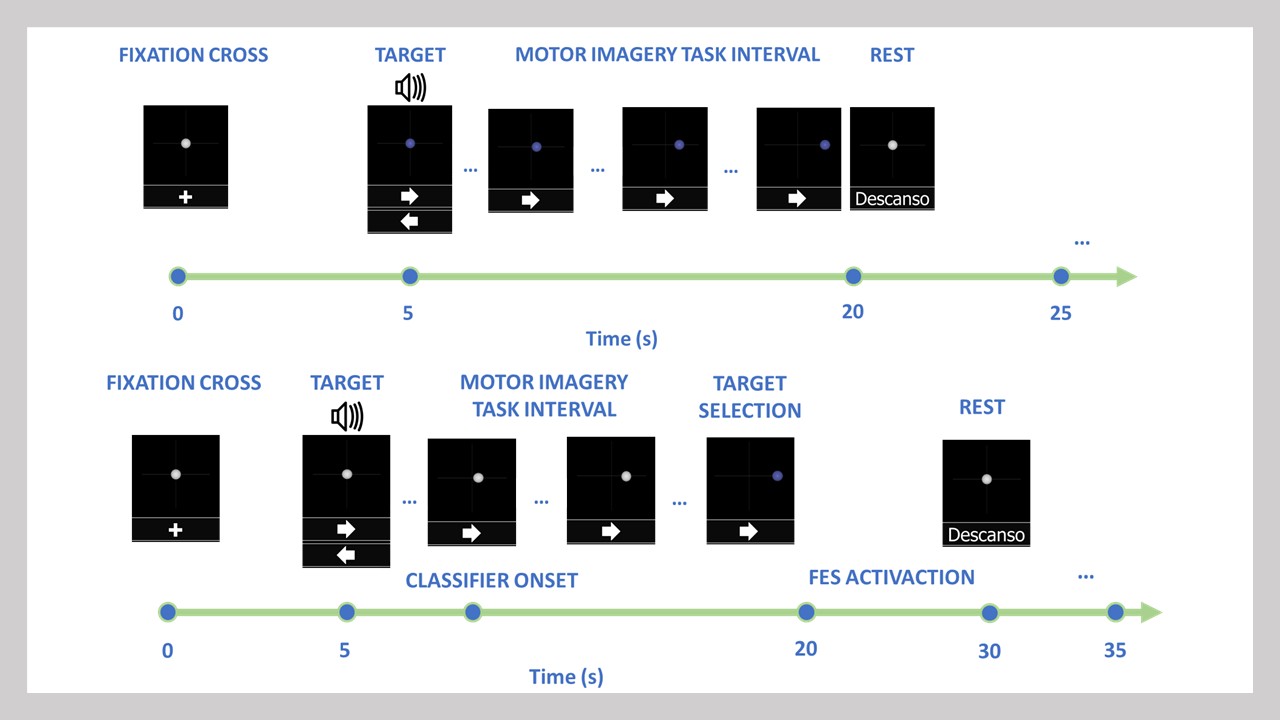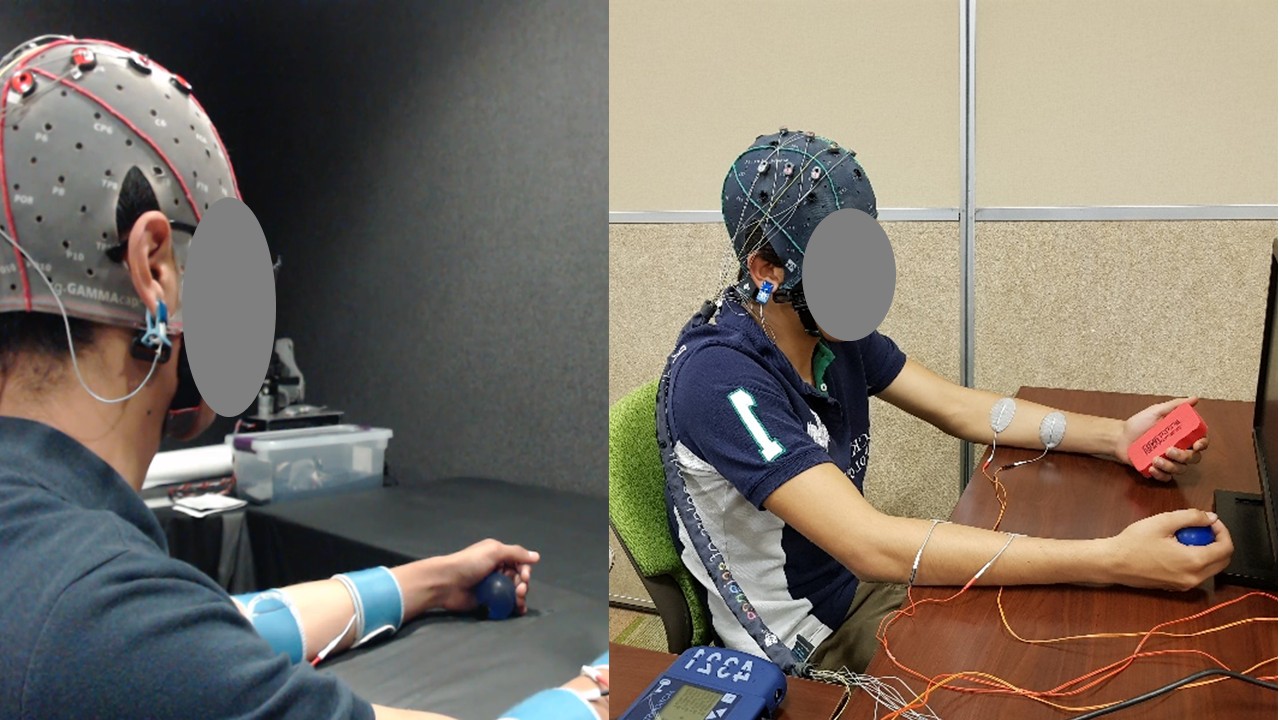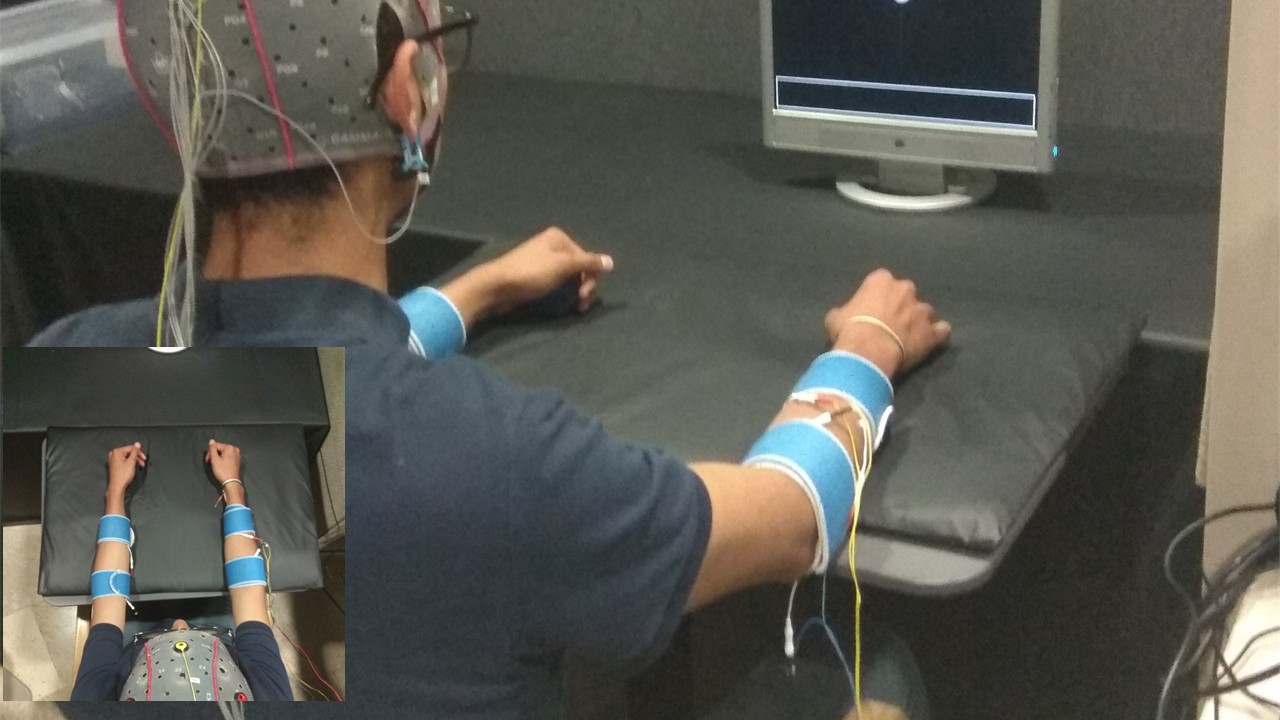Hand rehabilitation based on MI-BCI controlled functional electrical stimulation (FES)
Motor Imagery BCI system for spinal cord injury rehabilitation
MI-BCI Controlled FES for Hand Rehabilitation
This project involved the design, implementation, and validation of a Motor Imagery (MI)-based BCI to control a Functional Electrical Stimulation (FES) device. The goal of this system is to aid in the upper limb motor recovery of patients with spinal cord injury (SCI). In this BCI-controlled FES system, users perform motor imagery of either opening or closing their left or right hand. When the system detects the correct motor imagery, it provides visual feedback and electrical stimulation to the forearm muscles to execute the corresponding grasping movement. As the system is focused on rehabilitation, it ensures that no feedback or electrostimulation is provided if the intended motor imagery is not correctly detected. The system was evaluated with both healthy individuals and SCI patients to assess its effectiveness.
System Functionality
- Motor Imagery Detection: Left/right hand MI detected by ML algorithms
-
FES Activation:
- Left hand MI triggers left FES
- Right hand MI triggers right FES
- Safety Features: No stimulation if MI not detected
- Visual Feedback: Real-time display of detected MI
Project Highlights
- Technology: MI-BCI + FES
- Application: Spinal cord injury rehabilitation
- Key Feature: Closed-loop neurorehabilitation
Technical Details
System Components
- EEG Acquisition System
- FES Stimulation Device
- Machine Learning Classifier
- Visual Feedback Interface





